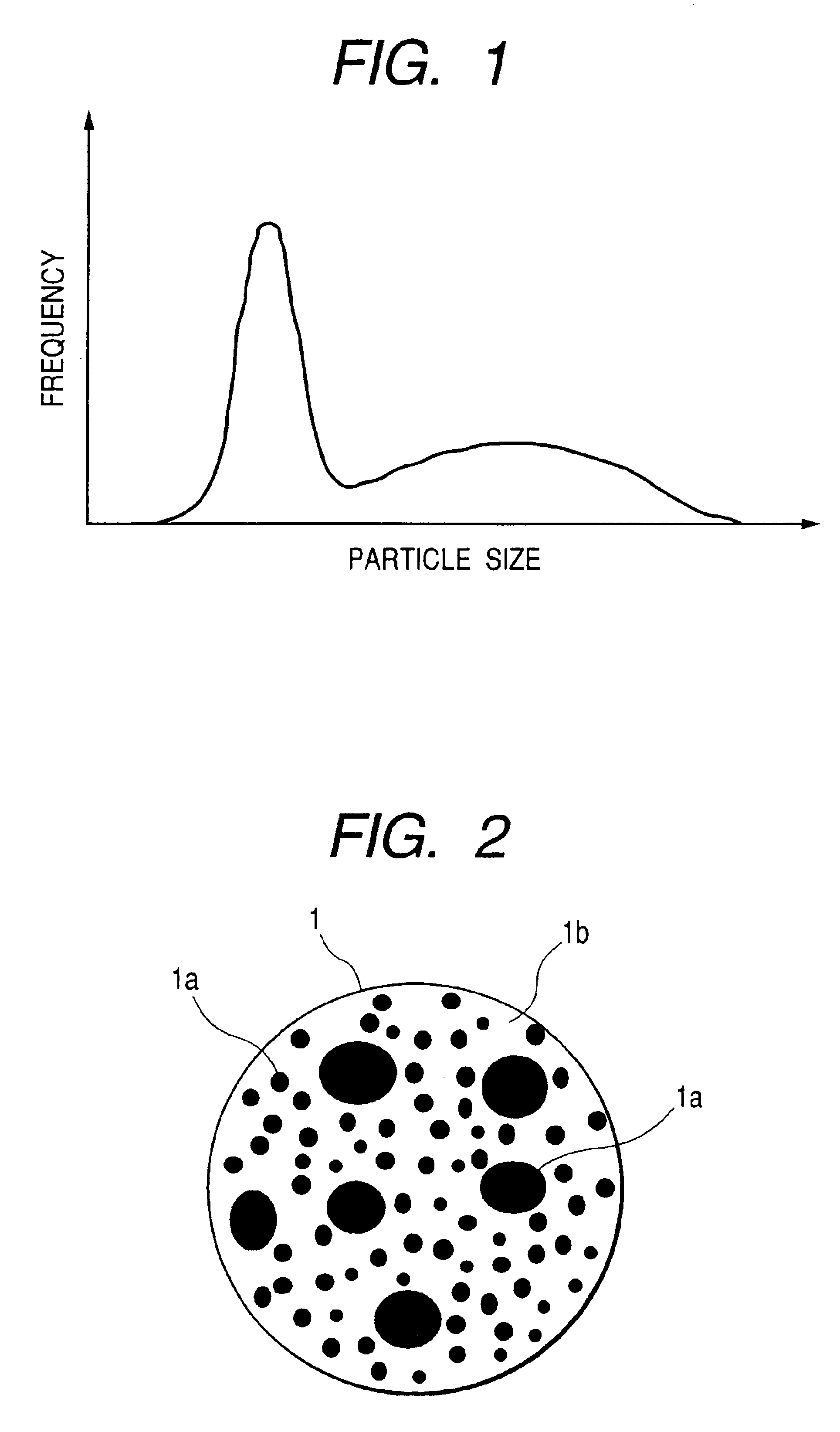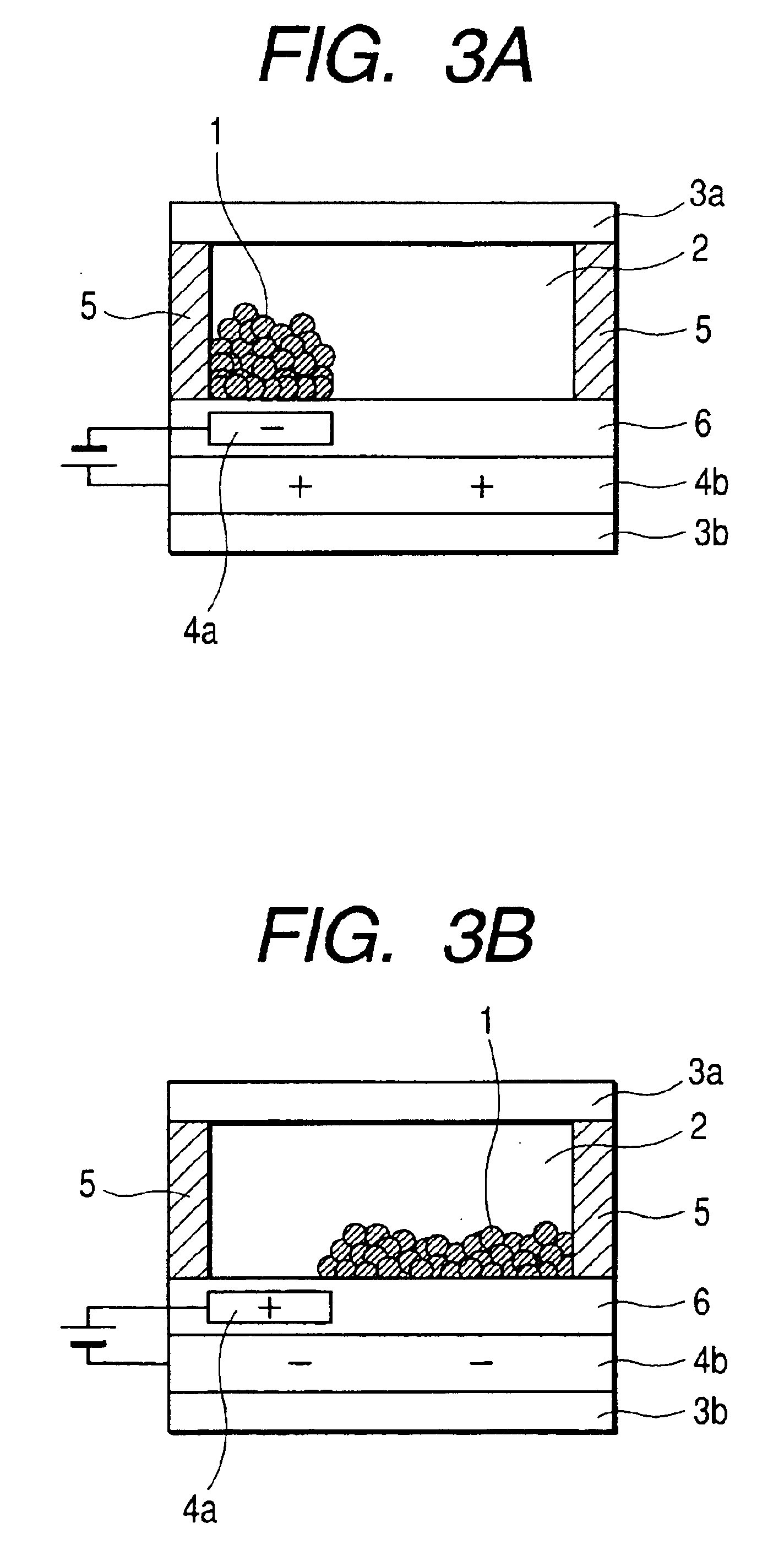Particles for electrophoretic display and electrophoretic display apparatus using them
a technology of electrophoretic display and electrophoretic display apparatus, which is applied in the direction of electrographic process apparatus, instruments, optics, etc., can solve the problems of ineffective cancellation of disadvantages, visual tension, and inability to easily identify letters and characters in the imag
- Summary
- Abstract
- Description
- Claims
- Application Information
AI Technical Summary
Benefits of technology
Problems solved by technology
Method used
Image
Examples
example 1
[0112]An example of the displaying particles containing a granular black pigment is shown below.
[0113]A 35 g portion of resin dispersion liquid A, 1 g of divinyl benzene, and 0.35 g of a polymerization initiator AIBN (azoisobutyronitrile) were mixed sufficiently and the mixture was deaerated by an ultrasonic dispersing machine for 10 minutes. This mixture was put into mixture liquid C, and emulsified by an emulsifying machine. This emulsified liquid was sealed in a bottle with a silicone plug, and deaerated sufficiently by pressure reduction. Gaseous nitrogen was introduced therein. The emulsified mixture was allowed to react at 70° C. for 10 hours to form particles. After cooling, the reaction mixture was taken out. The calcium carbonate therein was decomposed by a sufficient amount of diluted hydrochloric acid. The particles were collected by filtration and washed with water to obtain electrophoretic displaying particles 1 containing a black pigment. The obtained particles had an ...
example 2
[0115]An example of the displaying particles containing a granular white pigment is shown below.
[0116]Electrophoretic displaying particles 1 containing a white pigment was prepared in the same manner as in Example 1 except that resin dispersion liquid A in Example 1 was replaced by 15 g of resin dispersion liquid A1 and 20 g of resin dispersion liquid A2. This electrophoretic displaying particles 1 was found to have an average particle size of 3 μm by particle size measurement. The electrophoretic displaying particles 1 were found to be polymer particles enclosing granular pigment 1a therein as shown in FIG. 2 by electron microscopy observation. Granular pigment 1a had a maximum granule diameter of about 800 nm.
example 3
[0117]Examples of three kinds of displaying particles containing a granular color pigment of red, green, or blue are shown below.
[0118]Three kinds of displaying particles 1 were prepared in the same manner as in Example 1 except that resin dispersion liquid A was replaced by resin dispersion liquid AR, resin dispersion liquid AG, or resin dispersion liquid ABu. The electrophoretic red displaying particles 1 contained a red pigment consisting of a mixture of red pigments of average granule diameters of 10 nm and 500 nm. The electrophoretic green displaying particles 1 contained a green pigment consisting of a mixture of green pigments of average granule diameters of 30 nm and 100 nm. The electrophoretic blue displaying particles 1 contained a blue pigment consisting of a mixture of blue pigments of average granule diameters of 20 nm and 200 nm.
PUM
 Login to View More
Login to View More Abstract
Description
Claims
Application Information
 Login to View More
Login to View More - R&D
- Intellectual Property
- Life Sciences
- Materials
- Tech Scout
- Unparalleled Data Quality
- Higher Quality Content
- 60% Fewer Hallucinations
Browse by: Latest US Patents, China's latest patents, Technical Efficacy Thesaurus, Application Domain, Technology Topic, Popular Technical Reports.
© 2025 PatSnap. All rights reserved.Legal|Privacy policy|Modern Slavery Act Transparency Statement|Sitemap|About US| Contact US: help@patsnap.com



